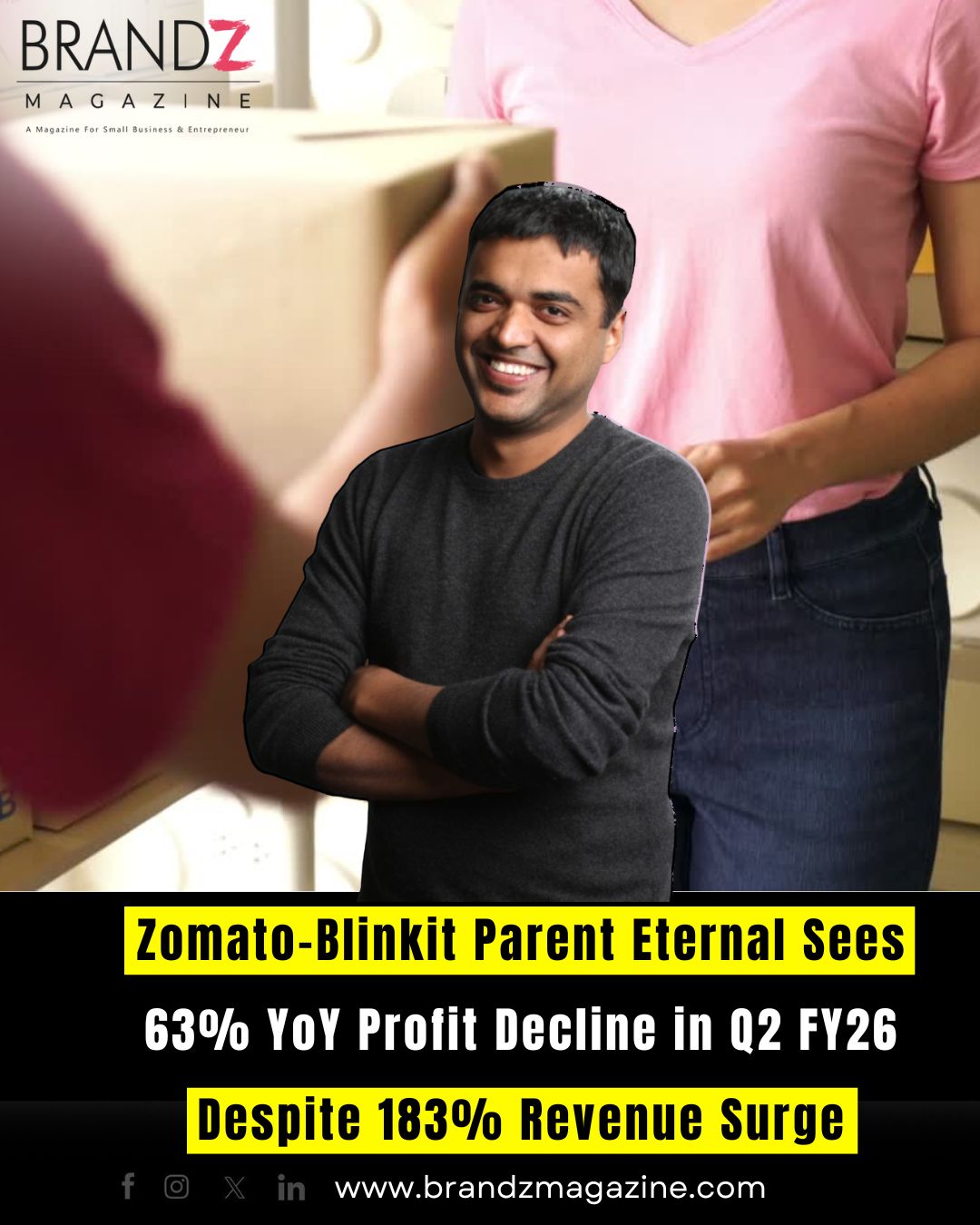
Eternal, the parent company of Zomato and Blinkit, has reported a mixed bag of financial results for the second quarter of FY26. While the company’s consolidated profit dropped 63% year-on-year (YoY) to INR 65 crore, its operating revenue saw a massive jump of 183% YoY, reaching INR 13,590 crore, compared to INR 4,799 crore in the same quarter last year.
Table of Contents
ToggleOn a quarter-on-quarter (QoQ) basis, Eternal’s profit rose significantly by 160%, up from INR 25 crore reported in Q1 FY26. This indicates a steady path to recovery, despite the YoY drop in net profit. The profitability uptick sequentially suggests the company is working toward improved cost efficiency and operational optimisation, especially amid expanding revenue.
Read Also :- Rapido Expands into Travel Bookings with Goibibo, RedBus & ConfirmTkt Partnerships
Eternal’s total income, which includes other income of INR 352 crore, stood at INR 13,942 crore for the quarter. This reflects strong momentum across its business units, especially with Blinkit’s rapid growth and Zomato’s consistent performance in the food delivery and dining-out segments.
However, the growth story came at a cost. The company’s total expenses surged 189% YoY and 85% QoQ to INR 13,813 crore, highlighting rising operational and marketing expenditures. These expenses appear aligned with the company’s aggressive push to expand Blinkit’s quick commerce infrastructure and deepen its market presence across multiple Indian cities.
The near-tripling of revenue YoY underscores the strong performance of Eternal’s core verticals. Blinkit, Zomato’s quick commerce arm, has rapidly scaled up over the past year, capitalising on the growing demand for 10-minute grocery deliveries and hyperlocal convenience.
Zomato, the food delivery giant, has continued to maintain a stronghold in urban markets while also expanding into Tier-II and Tier-III cities. With strategic synergies between Zomato and Blinkit, Eternal has created a powerful ecosystem capable of tapping into India’s booming digital consumption trends.
While the top line paints a promising picture, the sharp decline in YoY profit reflects cost pressures, increased customer acquisition spends, and possibly lower margins in the quick commerce segment. The company is likely investing heavily in technology, logistics, and warehousing — all of which contribute to rising costs.

